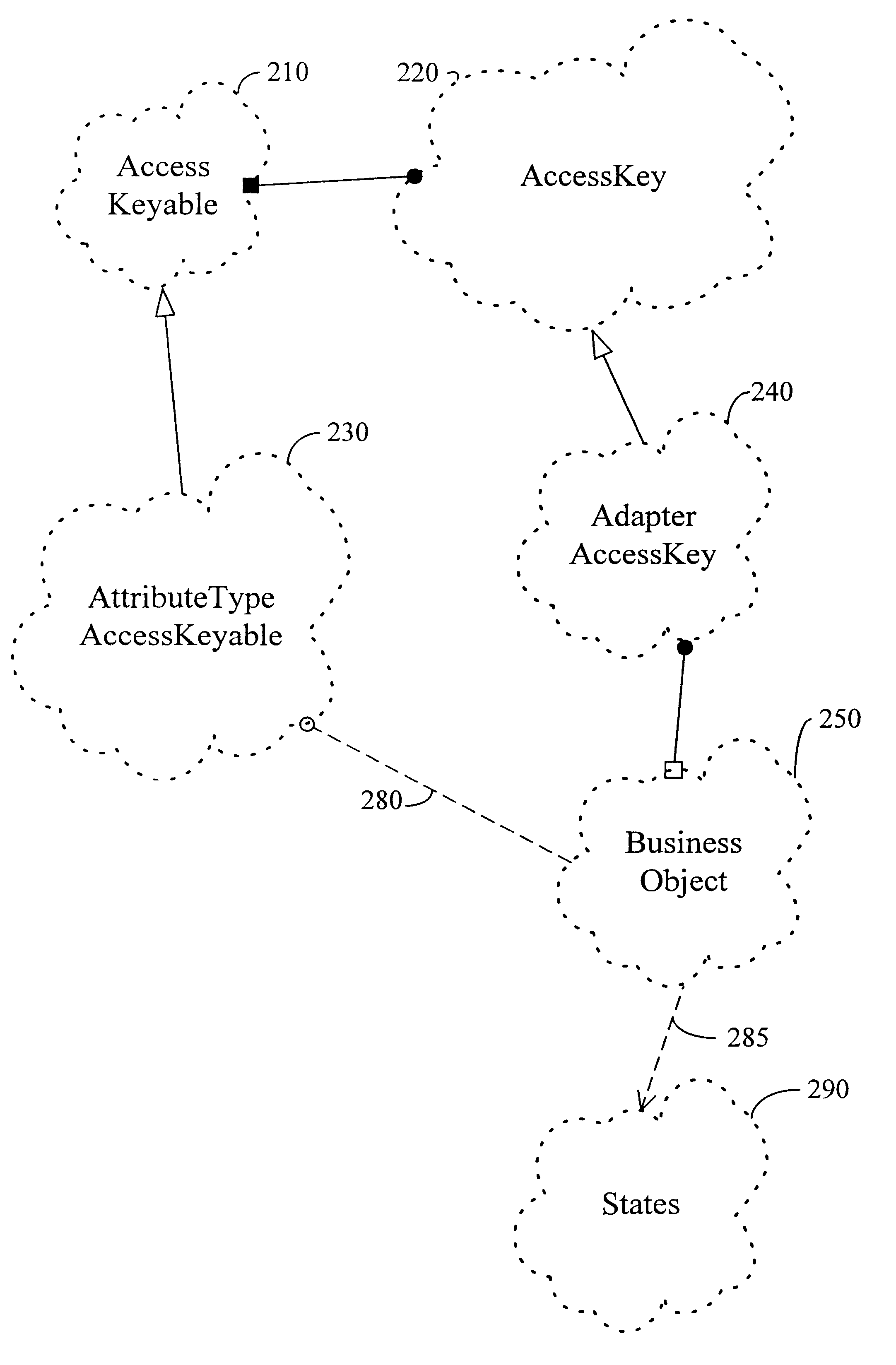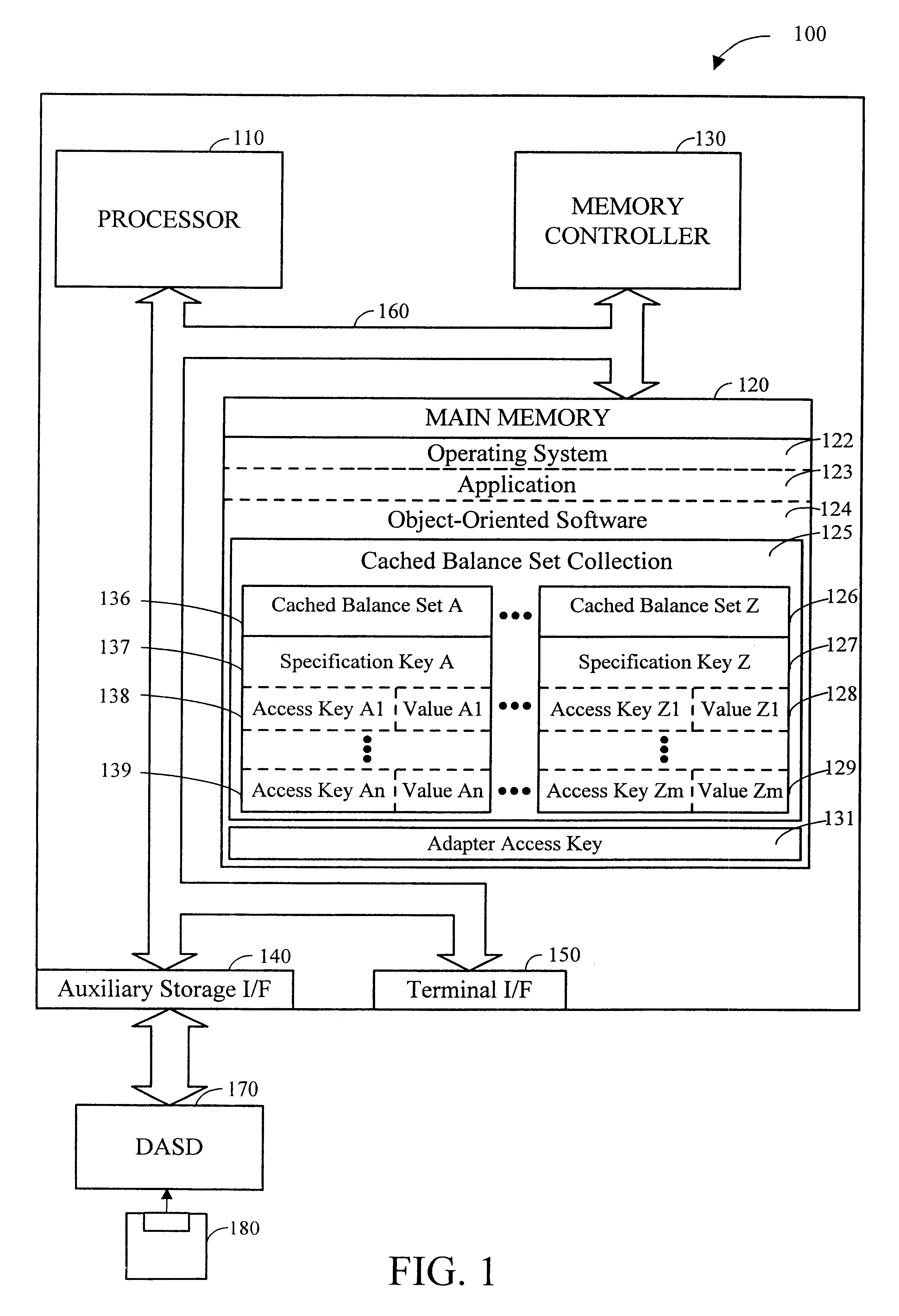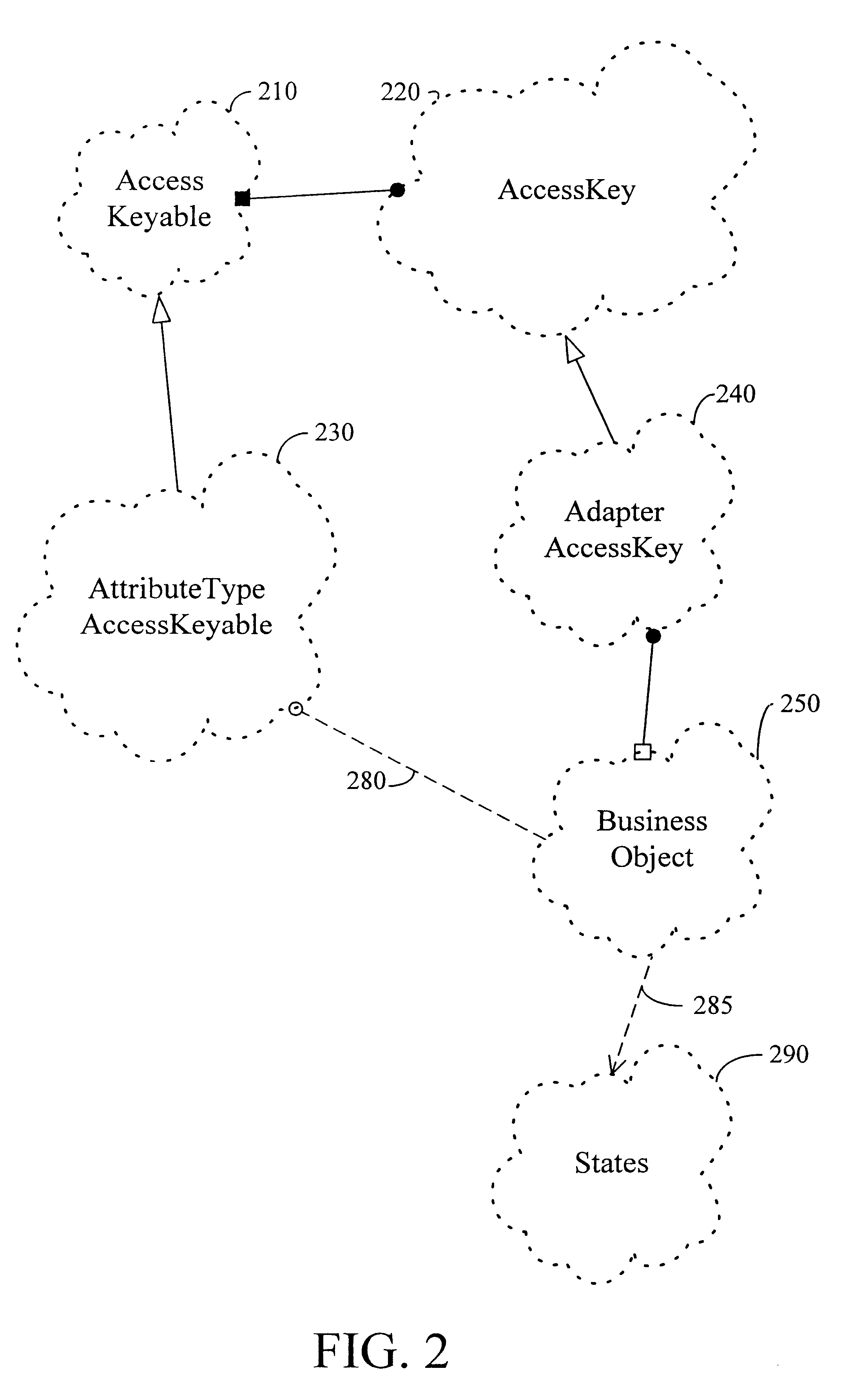Use of adapter key to increase performance when updating a value referenced by a data access object
a technology of data access objects and adapters, applied in the field of adapters, can solve the problems of reducing the amount of total criteria required, affecting the performance of the application, and affecting the quality of the application, so as to eliminate the copying of the original key, and reduce the amount of total criteria. the effect of the total criteria
- Summary
- Abstract
- Description
- Claims
- Application Information
AI Technical Summary
Benefits of technology
Problems solved by technology
Method used
Image
Examples
Embodiment Construction
has access keys 610 and 630, and specification key 640. Incomplete specification key 640 ignores the order number and delivery type but contains all customers and the accepted and shipped order status. The latter is called a "Dynamic Set", in that more than one keyable specific value is specified. The "ignored" indicates an unused position.
If an include function 650 is run using access key 610 and specification key 640, a FALSE 660 will be returned. The order status (on hold) for access key 610 is not within the dynamic set of order status variables (accepted, shipped). Thus, access key 610 is not in the volume (of vectors) delineated by specification key 640. On the other hand, if an include function 650 is run using access key 630 and specification key 640, a TRUE 680 will be returned. The order status (accepted) for access key 630 is within the dynamic set of order status variables (accepted, shipped). In addition, the customer (alpha) is within the set of all customers, and the ...
PUM
 Login to View More
Login to View More Abstract
Description
Claims
Application Information
 Login to View More
Login to View More - R&D
- Intellectual Property
- Life Sciences
- Materials
- Tech Scout
- Unparalleled Data Quality
- Higher Quality Content
- 60% Fewer Hallucinations
Browse by: Latest US Patents, China's latest patents, Technical Efficacy Thesaurus, Application Domain, Technology Topic, Popular Technical Reports.
© 2025 PatSnap. All rights reserved.Legal|Privacy policy|Modern Slavery Act Transparency Statement|Sitemap|About US| Contact US: help@patsnap.com



